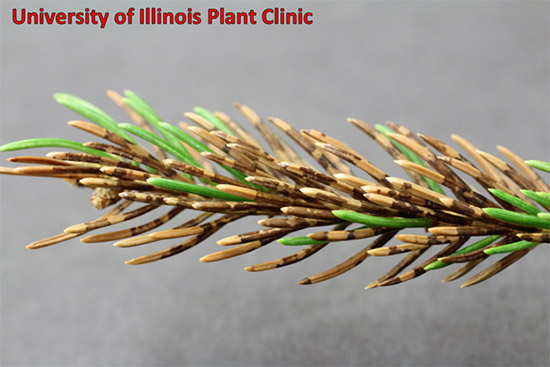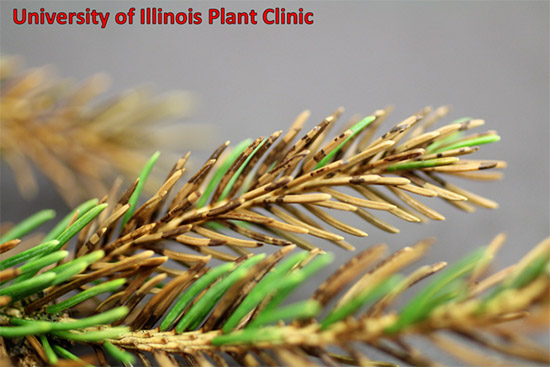Issue 3, May 15, 2017
Banded Spruce Needles

We received two samples of spruce, one Norway and one White, with a distinctive, brown banding pattern on the needles at the Plant Clinic in the last few weeks. We've seen similar symptoms occasionally over the years, and have never been able to associate the damage with a pathogen or insect pest.

These samples arrived in good condition. The banding appeared as light brown bands, with darker red/brown splotches within the bands. The damage appeared to be worst on the newer needles, but was scattered between branches. The sample was incubated to encourage sporulation of any fungal pathogens present, and examined microscopically for pathogens, insects, and arthropods. None were found. Norway and White spruce are fairly well-adapted to Illinois conditions and tend to be tolerant of many stressful conditions that would lead to damage on a Colorado blue spruce. We don't often see too many needle problems on these tougher spruce trees.
Thankfully, the clients had provided very detailed information on their sample submission forms. The only similarity between both samples? Dormant oil applied to the trees as a preventative for mites. Correct application of dormant oils should not harm most plants (always check the label before you apply, as there are plants that dormant oil can damage!). However, in this case it's possible that an incorrect application was made, or that there was some contamination that caused the damage. The damage noted (splotches, on the outer-most parts of the tree) is consistent with spray damage and would explain the lack of pathogen or pest associated with the symptoms.
The trees should recover, but the damaged needles will not. It will take several years of new growth to hide the damaged needles (which may fall from the branch, leaving a bare spot). Always remember to check the label of anything you choose to apply, and thoroughly clean equipment used to apply pesticides to avoid carryover! (Diane Plewa)